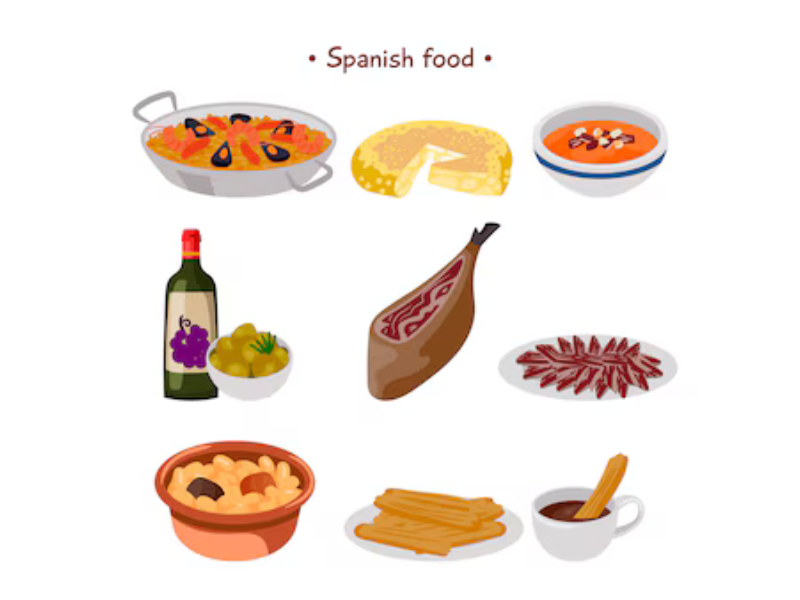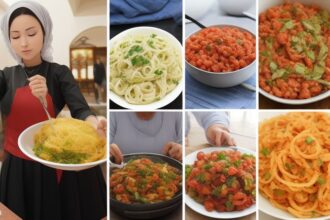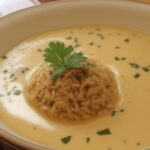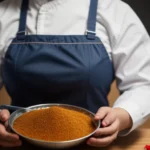Unlocking the Secrets of Spain’s Culinary Heritage
Spain is a country rich in culture, history, and most importantly, culinary delights. From the vibrant markets filled with fresh produce to the bustling tapas bars serving up delicious bites, Spain’s food scene is a reflection of its diverse regions and unique heritage. In this article, we will delve into the secrets of Spain’s culinary heritage, exploring the traditional dishes, ingredients, and cooking methods that have been passed down through generations.
1. Introduction to Spain’s Culinary Heritage
Spain’s culinary heritage is a melting pot of influences from various cultures, including the Romans, Moors, and Sephardic Jews. These diverse influences have shaped Spain’s cuisine, creating a blend of flavors and ingredients that are unique to the region.
2. The Importance of Olive Oil
One of the key ingredients in Spanish cuisine is olive oil. Spain is the largest producer of olive oil in the world, and it is used in nearly every dish, from salads to paella. The quality of Spanish olive oil is unmatched, with different regions producing oil with distinct flavors and aromas.
3. The Role of Wine in Spanish Cuisine
Wine is another integral part of Spain’s culinary heritage. Spanish wines, such as Rioja and Ribera del Duero, are known for their high quality and unique flavors. Wine is often used in cooking, adding depth and complexity to dishes such as braised meats and stews.
4. Exploring Spain’s Regional Cuisines
Spain is divided into several regions, each with its own culinary traditions. In the Basque Country, you will find dishes such as pintxos, small bites served on bread, and seafood-based dishes like bacalao al pil-pil. In Catalonia, the cuisine is heavily influenced by French and Italian flavors, with dishes like paella and Catalan cream.
5. Uncovering the Secrets of Spanish Jamón
No article about Spain’s culinary heritage would be complete without mentioning jamón. Spanish cured ham is famous around the world for its rich, savory flavor and melt-in-your-mouth texture. Jamón is a staple in Spanish households and is often served as a tapa or appetizer.
6. The Art of Tapas
Tapas are a quintessential part of Spanish cuisine, with small plates of food served alongside drinks in bars and cafes. Each region of Spain has its own unique tapas, from the seafood-based dishes of Andalusia to the hearty stews of Castile. Tapas culture is a social experience, with friends and family gathering to share plates and chat over a glass of wine.

7. Traditional Spanish Dishes to Try
When exploring Spain’s culinary heritage, there are several traditional dishes that you must try. Paella, a rice dish cooked with saffron and mixed seafood or meat, is a must-try in Valencia. Gazpacho, a refreshing cold soup made with tomatoes, cucumbers, and peppers, is perfect for hot summer days. And of course, who can forget about churros con chocolate, a sweet treat enjoyed for breakfast or dessert.
8. The Influence of Moorish Cuisine
During the Moorish occupation of Spain, from the 8th to the 15th century, many culinary traditions were brought to the region. Moorish cuisine is characterized by its use of spices, fruits, and nuts, which can be seen in dishes like rice pilaf and almond pastries.
9. The Legacy of Spanish Conquistadors
The Spanish conquistadors played a significant role in introducing new ingredients and cooking techniques to Spain. Ingredients such as tomatoes, potatoes, and chocolate were brought back from the Americas and integrated into Spanish cuisine. These ingredients have become staples in Spanish dishes, like patatas bravas and chocolate con churros.
10. The Rise of Molecular Gastronomy in Spain
In recent years, Spain has become known for its innovative approach to cooking, with chefs like Ferran Adrià and José Andrés leading the way in molecular gastronomy. Techniques such as spherification and foams have been used to create avant-garde dishes that push the boundaries of traditional Spanish cuisine.
11. Preserving Traditional Recipes
Despite the rise of modern cooking techniques, there is a movement in Spain to preserve traditional recipes and cooking methods. Organizations like the Royal Academy of Gastronomy work to document and promote traditional Spanish cuisine, ensuring that these culinary traditions are passed down to future generations.
12. Culinary Tourism in Spain
Culinary tourism has become increasingly popular in Spain, with travelers flocking to the country to sample its world-renowned food and wine. Food tours, cooking classes, and wine tastings are just a few of the ways that visitors can immerse themselves in Spain’s culinary heritage and learn about the secrets of Spanish cuisine.
13. The Future of Spanish Cuisine
As Spain continues to evolve and innovate, the future of its culinary heritage is bright. Chefs are experimenting with new flavors and techniques, while also honoring the traditions that have been passed down through generations. Spanish cuisine is constantly evolving, but its roots in history and culture remain strong.
14. Conclusion
Spain’s culinary heritage is a reflection of its diverse history and culture. From the Moorish influences to the legacy of the Spanish conquistadors, each aspect of Spanish cuisine tells a story. By exploring the traditional dishes, ingredients, and cooking methods of Spain, we can unlock the secrets of this rich culinary heritage and appreciate the flavors that make Spanish cuisine so unique.
15. Resources for Exploring Spain’s Culinary Heritage
For those interested in delving deeper into Spain’s culinary heritage, there are several resources available. Cookbooks like “The Food of Spain” by Claudia Roden and “1080 Recipes” by Simone Ortega offer a comprehensive look at traditional Spanish dishes. Travel guides like “The Food Lover’s Guide to Spain” by Giles Tremlett provide information on the best places to eat and drink in Spain. And for those looking to learn hands-on, cooking classes and food tours are a great way to experience Spain’s culinary heritage firsthand.
FAQs about “Unlocking the Secrets of Spain’s Culinary Heritage”
- What sets “Unlocking the Secrets of Spain’s Culinary Heritage” apart from other books on Spanish cuisine? “Unlocking the Secrets of Spain’s Culinary Heritage” delves deep into the historical and cultural aspects of Spanish cuisine, unraveling its rich tapestry of flavors, traditions, and influences, making it an indispensable guide for culinary enthusiasts.
- Which aspects of Spanish culinary heritage are explored in this book? This book explores various aspects of Spanish culinary heritage, including regional specialties, traditional cooking techniques, the significance of ingredients, and the cultural context that shapes Spanish gastronomy.
- Are specific Spanish dishes featured in this culinary exploration? Yes, “Unlocking the Secrets of Spain’s Culinary Heritage” features a diverse selection of Spanish dishes, ranging from iconic classics like paella and gazpacho to lesser-known regional specialties. Each dish is accompanied by insights into its history, preparation, and cultural significance.
- How does this book unlock the secrets of Spain’s culinary heritage? This book unlocks the secrets of Spain’s culinary heritage by delving into the historical roots, cultural influences, and regional variations that define Spanish cuisine. It offers readers a deeper understanding of the traditions, rituals, and stories behind Spain’s most beloved dishes.
- Can readers expect to gain practical knowledge and cooking tips from this book? Absolutely! “Unlocking the Secrets of Spain’s Culinary Heritage” provides readers with practical knowledge, cooking tips, and recipe ideas to recreate the authentic flavors of Spain in their own kitchens. Whether you’re a novice cook or a seasoned chef, you’ll find inspiration and guidance to embark on a culinary journey through Spain’s diverse gastronomic landscape.
Advantages:
- Intriguing language: The title “Unlocking the Secrets of Spain’s Culinary Heritage” uses evocative terms to suggest uncovering hidden knowledge and insights into the culinary traditions of Spain, immediately capturing the reader’s interest.
- Educational value: By focusing on Spain’s culinary heritage, the title promises readers a deeper understanding of Spanish cooking methods, flavor profiles, and culinary traditions, providing them with valuable knowledge about the country’s gastronomic history.
- Cultural immersion: Readers can anticipate learning about the diverse regional cuisines of Spain, as well as the cultural and historical influences that have shaped Spanish cooking, fostering a deeper appreciation for Spanish culture.
- Gastronomic exploration: The title suggests an exploration of a variety of Spanish dishes, ingredients, and cooking techniques, providing readers with a comprehensive overview of the rich culinary landscape of Spain.
- Practicality: By featuring the secrets of Spain’s culinary heritage, the title appeals to readers interested in mastering the art of Spanish cooking, providing them with practical tips, recipes, and insights to recreate authentic Spanish flavors at home.
Disadvantages:
- Lack of specificity: While Spain’s culinary heritage is mentioned, the title does not specify which aspects of the culinary heritage will be explored or which dishes will be featured, leaving readers uncertain about the scope of the content.
- Potential oversimplification: Focusing solely on unlocking secrets may oversimplify the richness and complexity of Spain’s culinary traditions, overlooking cultural nuances and regional specialties.
- Accessibility of ingredients: Some traditional Spanish dishes may require specific ingredients that are difficult to find outside of Spain or major culinary hubs, limiting the practicality of the recipes for some readers.
- Dietary restrictions: Spanish cuisine often includes ingredients like cured meats, cheese, and seafood, which may not be suitable for individuals with dietary restrictions or preferences, potentially alienating some readers.
- Cultural appropriation: Without proper context and understanding, celebrating Spain’s culinary heritage could risk appropriating cultural elements without acknowledging their significance or respecting their origins.
















